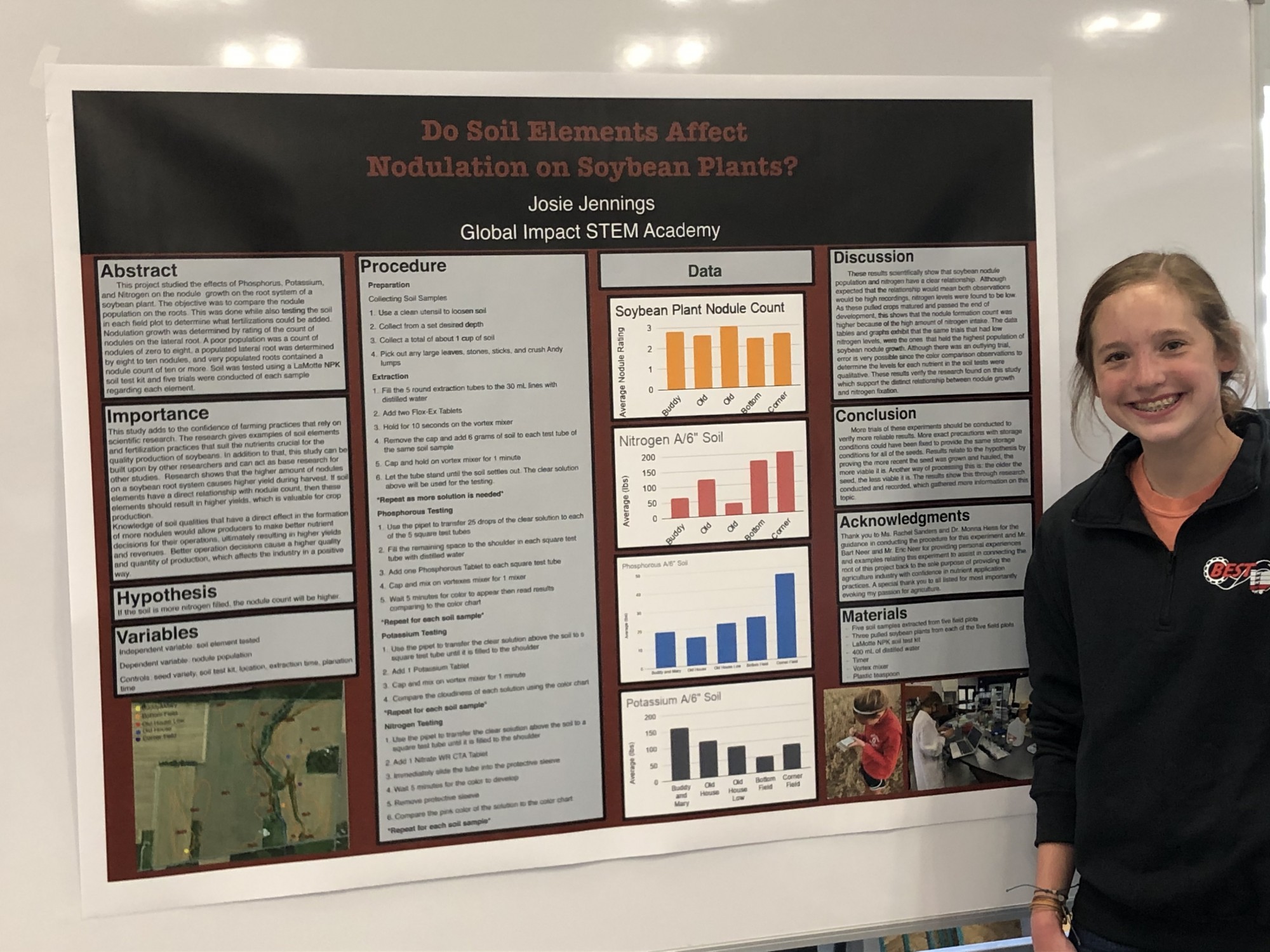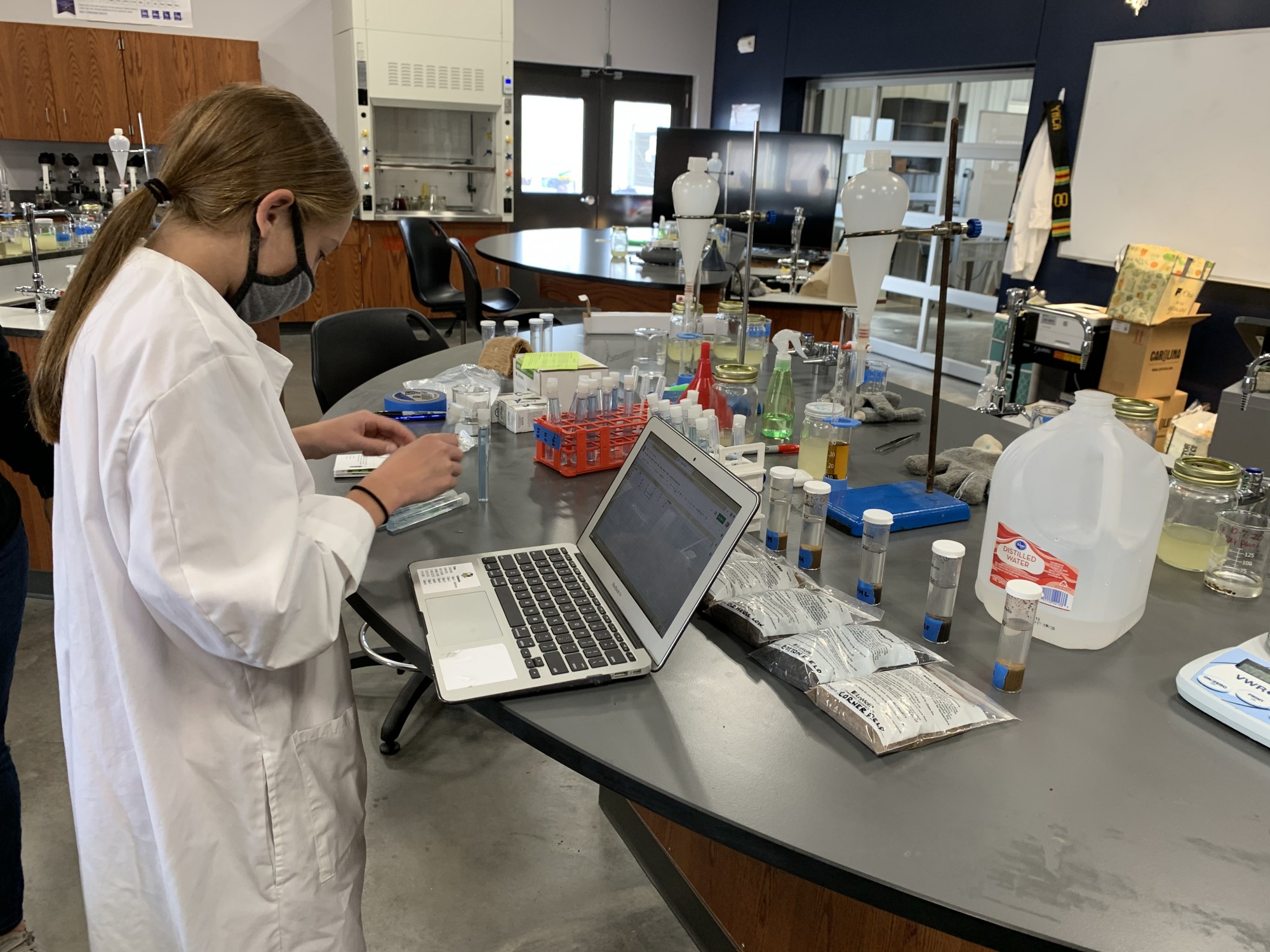The effect of soil minerals on root nodulation
Do Soil Elements Affect Nodulation On Soybean Plants?
Supervising teacher
Rachel Sanders
Student
Josie Jennings
School
Global Impact STEM Academy
Supporting files
josie-jennings-agriscience-final-2021.pdf
This project studied the effects of Phosphorus, Potassium, and Nitrogen on the nodule growth on the root system of a soybean plant. The objective was to compare the nodule population on the roots. This was done while also testing the soil in each field plot to determine what fertilizations could be added. Nodulation growth was determined by rating of the count of nodules on the lateral root. A poor population was a count of nodules of zero to eight, a populated lateral root was determined by eight to ten nodules, and very populated roots contained a nodule count of ten or more. Soil was tested using a LaMotte NPK soil test kit and five trials were conducted of each sample regarding each element.
The most effective soil element was found to be nitrogen and similar results are verified in numerous scholarly articles. These studies show that soybeans have a high demand for nitrogen and the other tested elements, Phosphorus and Potassium also had a subtle but positive proven effect on the soybean plants.
The more nitrogen fixation in the soil, the healthier, more active nodules and the higher population on the lateral root. Less nitrogen-rich soils result in populated nodule counts while low amounts of nitrogen fixation resulted in poor populations of nodules. Prior research affirms the results of this study. This study adds to the confidence of farming practices that rely on scientific research. It also allows for other studies to build upon the results found in this study and more to come.
